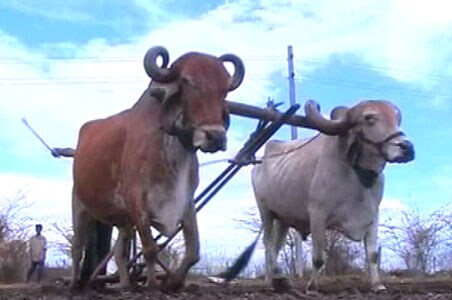
What does a poor monson mean for agriculture sector and the conomy? July will be the decider.
The tube well has dried up, and so has the well. In the soybean belt of Malwam, the crop should have been sown by now.
"If the seed is sowed, both farmer and labourer will eat. If it doesn't rain both will die," said Jeevan, a farmer.
Madhya Pradesh produces 55 per cent of the country's edible oils, and is the highest producer of gram and pulses now facing a rainfall deficit of 95 per cent, threatening food security.
Food prices are already up and there is a fear of crop failure. All are praying for the best and preparing for the worst.
Deep into the sugar belt to the west, there are more signs of desperation. Farmers like Pandurang Pawar have switched to growing bajra. The sugarcane, which needs a lot of water, is being seen as a risk.
"We cannot cultivate in the absence of rainfall," said Pawar.
Away in Saurashtra, the jinx seems to have broken, only now
"We waited 15 days for the rains. Last two days, it has rained. I will sow groundnut seeds, and hope for a good rainy season," said Beva Keshvala, a farmer.
Saurashtra contributes a large chunk of the country's cotton and groundnut production. Delayed monsoons means that the agricultural contribution to GDP reduces.
June has been a cruel month for farmers. July will be the ultimate decider when the bulk of food grains will be sown.

